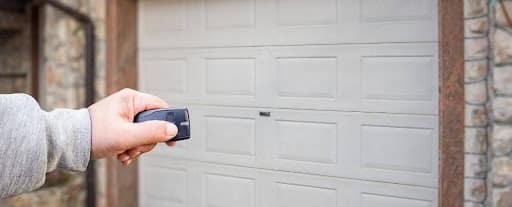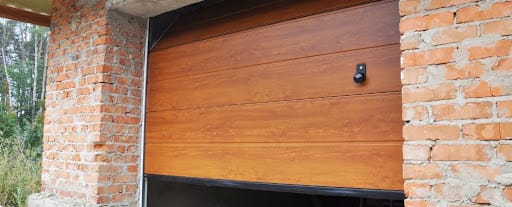Is your garage feeling more like an oven in summer and a freezer in winter? A well-insulated garage door can prevent these extreme temperature shifts, offering consistent comfort.
Our guide outlines simple steps to insulate your garage door, enhancing energy efficiency and tranquility in your workspace.
Get ready to transform your garage into a cozy retreat!
Key Takeaways
- Insulating a garage door maintains a regulated temperature, protects items and tools from damage, reduces noise levels, and increases energy efficiency.
- There are several types of insulation materials available such as rigid foam, batt insulation, and reflective foil that can fit different budgets and needs; each offers unique benefits like improved thermal resistance or ease of installation.
- Installing insulation involves measuring the garage door panels, cutting the material to fit snugly in each section, adding weatherstripping for sealing edges, and ensuring there are no drafts by replacing the bottom seal.
- Performing your own installation using DIY options can be more affordable. It’s important to use quality seals with high R-values to maximize effectiveness.
- Regular maintenance is key; replace worn seals periodically to maintain energy efficiency and protect your garage from external elements.
How to Insulate a Garage Door

Measure and install retainer pins to secure the insulation, cut and insert batting between the panels, and install weatherstripping and a new bottom seal for maximum insulation. Test the door to ensure it is properly insulated before finishing.
Measure and install retainer pins
To measure and install retainer pins on your garage door for insulation, follow these steps:
- Use a tape measure to determine the length of the area where the retainer pins will be installed.
- Position the retainer pins evenly along the length of the garage door panel.
- Securely fasten each retainer pin in place using the appropriate tools.
- Ensure that the retainer pins are firmly attached to provide a stable base for further insulation installation.
- Test the stability of the retainer pins by gently tugging on them before proceeding with additional insulation methods.
Cut and insert batting
To cut and insert batting, use a sharp knife to trim the insulation to fit the panels. Next, carefully insert the batting into each panel, ensuring a snug fit for maximum insulation.
- Trim the insulation to fit the panels using a sharp knife
- Carefully insert the batting into each panel
- Ensure a snug fit for maximum insulation
Install weatherstripping
To install weatherstripping:
- Clean the edges of the garage door panels with a damp cloth to remove any dirt or debris.
- Measure and cut the weatherstripping to fit each edge of the door panel, ensuring a snug fit without stretching the material.
- Secure the weatherstripping onto the edges of the door panels using adhesive or screws, depending on the type of stripping used.
- Ensure that there are no gaps or overlaps in the weatherstripping to provide a complete seal.
- Test the effectiveness of the weatherstripping by closing and opening the garage door to check for any air leaks or drafts.
Replace bottom seal
After installing weatherstripping, the next step is to replace the bottom seal. This helps in preventing drafts and ensuring better insulation for your garage door. Here’s how to replace the bottom seal:
- Measure the length needed for the new bottom seal by closing the garage door and marking where it meets the floor.
- Remove the old bottom seal by unscrewing it from the door.
- Clean any debris or dirt from the area where the new seal will be installed.
- Cut the new bottom seal to fit the measured length using a utility knife or scissors.
- Attach the new bottom seal by screwing it into place along the bottom of the garage door.
Test door for proper insulation
To ensure proper insulation for your garage door, follow these steps:
- Check for drafts: Use a lit candle or an incense stick to move around the edges of the door and observe any flickering, indicating air leaks.
- Test temperature control: Measure the temperature inside the garage before and after insulation to ensure a noticeable change.
- Assess noise reduction: Close the door and listen for exterior noise; better insulation should reduce sound transmission.
- Inspect energy efficiency: Monitor any changes in heating or cooling costs after insulating the garage door.
Tired of Endless Searching for Reliable Insulation Services? Look No Further!
Experience the difference with our competitive prices, top-notch workmanship, and prompt service. We specialize in hassle-free insulation installations, ensuring your comfort and satisfaction.
Enjoy Peace of Mind with Our 120-Day Warranty and Discounts!
Don’t let the stress of insulation repairs get you down. Choose us for quality service with special offers designed for you.
Benefits of Insulating a Garage Door

Insulating your garage door maintains comfort in your workshop, improves temperature control, protects items and tools, reduces noise, and increases energy efficiency.
Maintains comfort in workshop
Insulating your garage door turns the space into a cozy retreat during all seasons. Imagine stepping into your workshop on a chilly winter day or in the blistering summer heat and feeling just right.
High R-value insulation kits keep the cold out and the warmth in, creating an ideal work environment that’s comfortable year-round.
Properly installed insulation helps to maintain steady temperatures, ensuring that projects involving temperature-sensitive materials go smoothly. Say goodbye to layers of clothing or constant breaks to cool down; with insulated doors, you can work in peace without interference from extreme outdoor conditions.
Foam boards snugly fitted between panels block drafts, while weather stripping seals gaps where heat or cold could sneak through – this secure barrier means your workshop stays at a pleasant temperature no matter what’s happening outside.
Improves temperature control
Proper garage door insulation acts like a thermal shield, blocking hot or cold air from seeping through. This stabilized temperature means your garage stays cooler in the summer and warmer during winter months.
A well-insulated door prevents uncomfortable drafts and reduces the strain on your home’s heating and cooling systems.
Imagine working on projects without having to wear extra layers or use a space heater. Insulation materials such as fiberglass batts and rigid foam can help achieve that snug fit against temperature extremes.
Using a good-quality garage door insulation kit ensures every panel is covered, cutting down on heat loss or gain even further.
Next up, let’s explore how insulating your garage also shields your precious items and tools from harm caused by extreme weather conditions.
Protects items and tools

Insulating your garage door helps keep valuable items and tools in the best condition. Extreme temperatures can damage power tools, cause rust on metal objects, and warp wooden equipment.
With proper insulation, you create a stable environment that safeguards everything stored in your garage from harsh weather.
Your workbench becomes a safer place for electronics and delicate devices too. Moisture buildup is less of an issue when you have high R-value insulation blocking cold transfer through the door panels.
Insulation acts as a barrier to prevent condensation that often leads to mold growth—keeping your workspace healthy and your tools ready for action.
Reduces noise
By insulating your garage door, you can create a quieter environment for both your workshop and the rest of your home. Sound travels easily through uninsulated or poorly insulated garage doors, but by adding an extra layer of insulation, you can significantly reduce the noise that filters into your living spaces.
This is particularly beneficial if you use power tools or machinery in your garage, as it helps to keep the noise levels at a minimum, creating a more peaceful atmosphere inside and outside of your home.
Insulating your garage door also serves as an effective barrier against external noises such as traffic or neighborhood activities. This added soundproofing can make a noticeable difference in reducing disturbances and ensuring a more serene indoor environment.
Energy efficiency
Insulating your garage door can significantly improve energy efficiency. Proper insulation helps to regulate the temperature inside the garage, reducing the need for constant heating or cooling.
This not only saves on energy costs but also contributes to a more sustainable and eco-friendly lifestyle. By minimizing heat loss in the winter and heat gain in the summer, insulated garage doors help maintain a comfortable environment while decreasing reliance on HVAC systems.
To achieve these benefits, it’s essential to choose high-quality insulation materials with a high R-value and ensure proper installation techniques are employed. This investment in energy efficiency will pay off over time by lowering utility bills and reducing overall environmental impact.
Types of Garage Door Insulation
When it comes to insulating a garage door, there are several options to choose from. From rigid foam insulation to garage door insulation kits, each type has its own benefits and installation methods.
Rigid foam insulation
Rigid foam insulation is a popular choice for insulating garage doors due to its high R-value and ease of installation. It comes in large panels that can be cut to fit the dimensions of your door, providing excellent thermal resistance.
To install rigid foam insulation, measure the individual panels of your garage door and then use a utility knife to cut the rigid foam to size. Once cut, insert the panels into each section of the door, ensuring a snug fit.
Rigid foam insulation is an effective way to improve temperature control and reduce energy costs in your garage.
Batt insulation
Batt insulation is a popular choice for insulating garage doors due to its ease of installation and affordability. Made from fiberglass or natural fibers, batts come in standard sizes that can be easily cut to fit the panels of the garage door.
To install batt insulation, measure each panel and cut the batts slightly larger to ensure a snug fit. Then, simply place the batts into the panels and secure them in place using retention clips or adhesive tape for an effective barrier against heat loss, noise reduction, and improved energy efficiency.
The versatility of batt insulation makes it suitable for various garage door materials and sizes, providing an effective solution for maintaining a comfortable environment within your workshop while also protecting your tools and equipment.
Garage door insulation kits
Garage door insulation kits are an easy and effective way to insulate your garage door. These kits typically include all the necessary materials, such as foam panels or reflective foil insulation, along with retainer pins and weatherstripping.
With clear instructions and straightforward installation, these kits are a convenient option for adding insulation to your garage door without the need for specialized tools or extensive DIY experience.
Using a garage door insulation kit can significantly improve temperature control in your garage, reduce noise from outside, and enhance energy efficiency. The process usually involves measuring the panels of your garage door, cutting the insulation to fit, and securing it with retainer pins.
Tips for Insulating on a Budget
One way to insulate on a budget is by replacing worn seals and weatherstripping to prevent drafts. You can also consider using alternative materials or exploring DIY options for cost-effective insulation solutions.
Replace worn seals
To improve the insulation of your garage door, replace any worn seals around the edges. This will help to prevent drafts and maintain a more consistent temperature inside the garage.
By using new, properly fitted seals, you can also reduce noise from outside sources, adding to the overall comfort and functionality of your workspace.
Consider looking for high-quality seals with a good R-value to ensure maximum effectiveness in insulating your garage door. Additionally, regularly inspecting and replacing worn seals is an essential part of maintaining energy efficiency and protecting items stored in your garage.
Use alternative materials
Consider using alternative materials like recycled denim, reflective barrier insulation, or even bubble wrap as budget-friendly options for insulating your garage door. Recycled denim provides excellent thermal performance and sound absorption, while reflective barrier insulation reflects heat away from the garage.
Bubble wrap can be a quick and easy temporary solution to add an extra layer of insulation. These alternatives are cost-effective and can still provide significant improvements in temperature control and energy efficiency.
When considering alternative materials for insulating your garage door, keep in mind that these options may not offer the same level of effectiveness as traditional insulation methods.
However, they can still make a notable difference in maintaining a comfortable environment inside your garage while also helping to reduce noise and energy costs.
DIY options
For those looking to insulate their garage door on a budget, there are several cost-effective DIY options to consider. One option is to replace worn seals with new weatherstripping or bottom seal to prevent drafts and improve energy efficiency.
Another approach is to use alternative materials like reflective insulation or bubble wrap, which can provide some level of insulation at a lower cost. Additionally, homeowners can explore DIY kits available in stores for a more affordable way to add insulation without compromising quality.
These options allow individuals to effectively insulate their garage doors while staying within budget constraints.
If you’re seeking a more hands-on approach, consider creating your own DIY insulation using foam boards or batt insulation cut to fit the panels of your garage door. This allows for customization and potentially even greater energy savings compared to pre-made kits.
Conclusion
Insulating your garage door provides numerous benefits. It maintains a comfortable environment, improves temperature control, protects items and tools, reduces noise, and enhances energy efficiency.
By choosing the right type of insulation and following proper installation techniques, you can achieve optimal results for your garage door. Whether you opt for DIY options or professional assistance, insulating your garage door is a worthwhile investment that can enhance the functionality of your space.
Ready to experience hassle-free insulation service?
Contact Us Today and let us take the weight off your shoulders. You deserve a service that’s as reliable and dedicated as you are!
FAQs
1. What is the best insulation for a garage door?
The best insulation for a garage door has a high R-value, which shows it’s good at keeping heat in or out. Look for materials like spray foam that fit this description.
2. How do I install insulation on my garage door?
To install insulation, you’ll need to measure your garage door panels, cut the insulation to size, and fit it into each panel section securely.
3. Do R-values matter when choosing garage door insulation?
Yes! The R-value tells you how well the insulation will perform. Higher R-values mean better insulating power, so choose an option with a high rating for your location and climate.
4. Can I use roll-insulation to insulate my garage door?
Absolutely! Roll-insulation can be a good choice if it fits all the panels of your garage door properly and offers an adequate R-value for your needs.
5. Should I wear protection while installing garage door insulation?
Definitely! Always put on safety gear like a dust mask before starting work with any type of installation to avoid breathing in small particles



